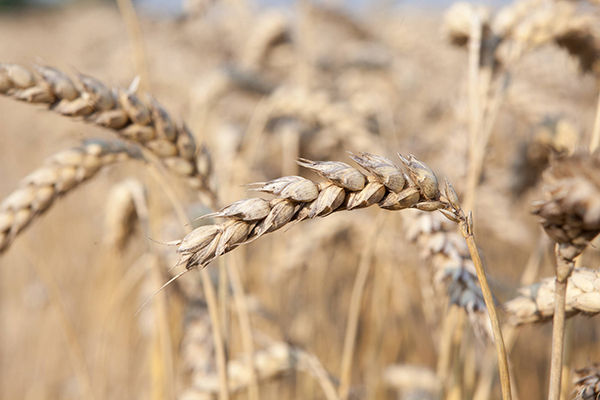What to Consider During Wheat Harvest
August 15, 2022

We spoke with Dr. Joel Ransom, extension agronomist, and Dr. Andrew Friskop, extension plant pathologist, of North Dakota State University (NDSU), to discuss late-season threats and essential steps to prepare for a successful wheat harvest.
What should a wheat grower keep top of mind as they prepare for harvest?
“One of the most important issues to consider as harvest approaches is grain moisture,” said Ransom. “To be safely stored for more than nine months, wheat should be at 13 percent moisture and 14 percent for storage of less than nine months.”
This means that the grain should be at or near that moisture at harvest or that a plan is in place to enable further drying after harvest. Prior to harvest, growers should inspect and clean the bins they will be using if storing any grain on-farm.
What threats impact yield at harvest time?
According to Ransom, leaving grain in the field to dry is one of the most cost-effective means of drying the grain. However, there are risks of leaving a mature crop in the field. Shattering can occur if there are strong winds, and the crop is dry and brittle. Rain on mature grain can cause it to weather and lose its bright color. It may start the germination process if periods of moisture are prolonged.
Pre-harvest sprouting is a serious concern for a mature crop and can greatly reduce its value. It is measured by the falling number test, and low falling numbers can be the basis for serious price discounts at the elevator.
“The timing of harvest helps prevent pre-harvest sprouting and other diseases,” he said. “The solution is to harvest sooner rather than later.”
What late-season disease pressure should you monitor?
There are several late-season diseases that can be noticed throughout the heading to kernel filling stages of wheat. Two late-season diseases that can result in discounts at the point of sale are ergot and Fusarium head blight.
Fusarium head blight can result in yield and quality losses. Friskop recommends managing Fusarium head blight by using an integrated approach with cultural practices, varietal resistance, and a fungicide application at early flowering timing. He also cautions that there is no silver bullet in a bad scab year, and it is important to monitor fields that have a noticeable amount of premature bleaching and shriveled kernels.
This disease can also result in the production of a mycotoxin called deoxynivalenol (DON), also known as vomitoxin (VOM). The presence of DON contaminates the grain and diminishes quality.
How can growers stop the spread of DON?
When DON is present in the grain as a result of Fusarium head blight, it is important to implement practices to prevent it from spreading further. To do so, Friskop suggests keeping scabby seed lots separate from sound seed lots.
“Cleaning can help reduce the number of scabby kernels and potentially reduce DON/VOM levels,” he said. “However, if the scab fungus infects late in the season, kernels may appear symptomless and still harbor DON, thus reducing the effectiveness of cleaning.”
When deciding to clean a scabby seed lot, the best success in reducing DON/VOM levels will be in seed lots with a high number of scabby kernels.
Should a grower make a late-season fungicide application?
“Fungicide that is applied during flowering as part of a scab control program often keeps the leaves greener longer and can slightly delay the dry-down process,” said Ransom. “Generally, this is not a concern. But in cool, wet falls, it may delay harvest and cause grain quality issues if delays mean that the crop is rained on repeatedly.”
Even so, diseases, such as scab, can infect a field in the latter part of the growing season. With timely application, Prosaro PRO fungicide helps improve grain quality and yield while fighting off disease.
“Overall, late-season diseases can hurt your yield and grain quality,” said Friskop. “The benefit of a flowering fungicide application will often outweigh the risk.”
In addition, spraying, seed cleaning and scouting throughout the season will help reduce the impact of diseases such as ergot and Fusarium head blight.
ALWAYS READ AND FOLLOW PESTICIDE LABEL DIRECTIONS. Not all products are registered for use in all states and may be subject to use restrictions. The distribution, sale, or use of an unregistered pesticide is a violation of federal and/or state law and is strictly prohibited. Check with your local dealer or representative for the product registration status in your state. Prosaro® is a registered trademark of Bayer Group. For additional product information call toll-free 1-866-99-BAYER (1-866-992-2937) or visit our website at www.BayerCropScience.us. Bayer CropScience LP, 800 North Lindbergh Boulevard, St. Louis, MO 63167. ©2022 Bayer Group. All rights reserved.